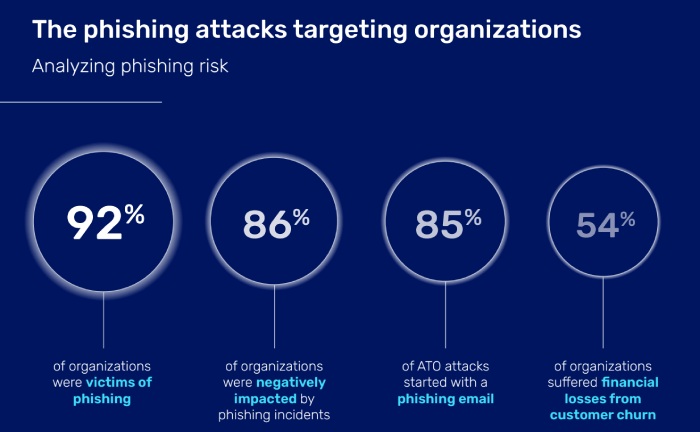
Originally, the concept of the Sender Policy Framework or SPF record was created to stop hackers from breaking into the mail servers of companies. However, with the advancement of technology and the growth of the cyber menace, threat actors have sought ways to abuse SPF DNS records for spoofing. Now, with the effectiveness and relevance of SPF being put into question, the concerns are directed towards the best practices to be followed to prevent spammers.
This article revolves around why and how you can minimize the risk of a compromised SPF TXT record and its standards.
Why SPF’s Security Matters?
As per a report released by the Anti-Phishing Working Group, APWG, the fourth quarter of 2022 experienced a total of 1,350,037 phishing attacks, up from 1,270,833 in the third quarter. It’s not new for malicious characters to masquerade as trusted entities and send fraudulent emails to establish trust and manipulate recipients into sharing sensitive details and documents or making financial transactions.
In January 2023, ICC, the global cricket governing body, lost around $2.5 million by falling victim to a string of phishing emails. The scammer cheated the authorities four times by impersonating a vendor.

Image Sourced from digitalinformationworld.com
This type of incident can be avoided with the placement and monitoring of email authentication protocols like SPF, DKIM, and DMARC, as they verify the sender’s authenticity and flag suspicious senders. Not only this, but they also confirm if a message’s content has been altered during transit.
Securing SPF records disallows messages sent by impostors to show up in primary inboxes; which means illegitimate emails either land in the spam folder or bounce back. This leaves little room for recipients to fall into the trap as they aren’t directly coming across these emails in the very first place. This safeguards your domain reputation and increases the email delivery value for mail servers and email service providers.
At times, permissive SPF records give hackers the opportunity to play around a little and get past the SPF security checks easily. That’s why it’s also critical to pair up SPF with DKIM and DMARC.
4 Practices to Help Avoid Exploitation of Your SPF Record
Here’s what you should try-
1. Avoid Publishing Inactive or Non-Dedicated Sending Sources in Your SPF Record
Adding an IP address to the list of officially authorized sending sources comes with both risk and trust; you need to trust the user that they won’t send spam emails and put your name at any risk. Enlisting an inactive IP address gives hackers the chance to break into the system and send fraudulent messages, posing as someone from your company.

So, if the service isn’t capable of offering you control over shared features, you need the feature to segregate genuine and potentially fraudulent flows clearly.
So, it’s best to gather a list of IP addresses that you directly control or are dedicated to be used for your operations. If this isn’t doable, you can deploy a Secure Email Gateway or SEG, which is a device or software that monitors and blocks incoming and outgoing messages. It also prevents the sharing of sensitive information or encrypts emails carrying sensitive details.
2. Avoid Including Domains and Subdomains of Third-Party Service Providers
The ‘include’ tag is used in an SPF record syntax to allow the inclusion of an entire SPF record of another domain or subdomain. This broad inclusion permits a lot of sending sources to dispatch messages on your behalf.
For example, if you have outsourced the job of sending marketing emails to an agency, then instead of including the entire domain of the agency, add the IP addresses of people who are actually involved and responsible for sending emails.
3. Be Careful With the Use of Dynamic SPF Macros
A static SPF record allows hackers to detect the services used by your company and exploit them covertly without tipping you off at all. Setting up and managing dynamic SPF macros is difficult. A well-crafted dynamic SPF macro can be advantageous for any moderately intricate sending architecture that depends on numerous independent services to send messages on its behalf.
This not only conceals authorized services from potential malicious actors attempting to analyze vulnerabilities in your email system but also significantly enhances your ability to monitor and manage your SPF record, as elaborated in the following discussion.

4. Regular Monitoring and Auditing
Don’t let your SPF record be overly permissive by not eliminating IP addresses and third-party vendors’ domains that are no longer sending emails on your behalf. Regular audits help you keep track of dormant and non-dedicated sources that can be vulnerable otherwise.
Final Words
Overly permissive SPF records are easy to abuse. So, gather a concise and not overly inclusive list of sending sources. In case you are facing issues in staying within the SPF lookup limit, a common issue amongst large enterprises, then try our automatic SPF flattening tool today!